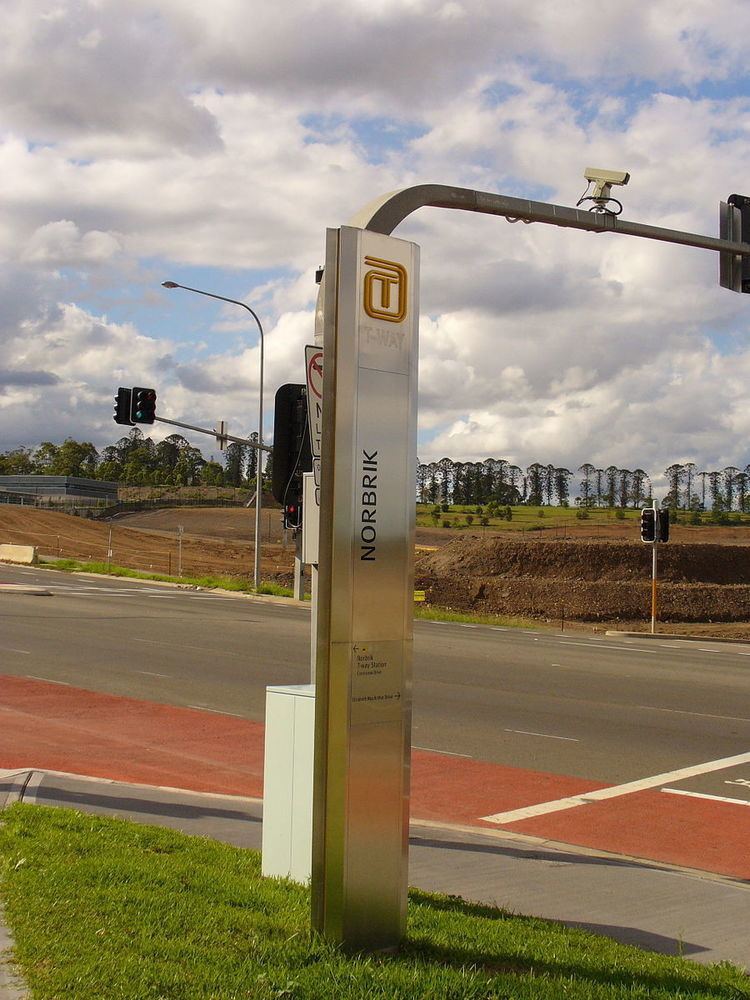Type Bus rapid transit Status Active Stations 35 | System T-ways Locale Sydney Opened February 2003 | |
 | ||
Owner Transport for New South Wales Terminis Parramatta railway station, Liverpool railway station | ||
The Liverpool–Parramatta T-way is a bus rapid transit line in the western suburbs of Sydney, Australia. "T-way" is short for rapid bus transitway.
Contents
Route and services
The 31 km (19.3 mi) T-way links the railway stations at Parramatta and Liverpool via a series of bus-only roadways and bus lanes. Services using the T-way are operated by Transit Systems Sydney. Before that, these services were operated by Western Sydney Buses (a subsidiary of the State Transit Authority). They were under Sydney Bus Region 3 and were transferred to Transit Systems Sydney on 13 October 2013, who won the tender to be the new operator of the region including the T-way.
A long-awaited first step in a plan to improve public transport services in Sydney's western suburbs, the T-way initially failed to live up to expectations, carrying half the number of passengers expected. Patronage has increased significantly, with annual patronage increasing by 328,000 in 2006. Patronage continues to grow, and in 2014-15 services were operating at capacity.
Design and construction
The T-way was constructed as a joint venture between the New South Wales Ministry of Transport and the Roads and Traffic Authority of New South Wales opening in February 2003 at a cost of $345.7 million.
The line runs through the central business district of Parramatta, before heading onto the Great Western Highway to South Wentworthville, after which it heads onto its own alignment next to the Sydney Water pipeline that runs from Prospect reservoir. It then proceeds on its own alignment in an old freeway reservation through to Hoxton Park. At Brickmakers' Creek in Liverpool it heads onto its own alignment to the centre of Liverpool and the railway station bus interchange. The system includes active traffic signal priority to give buses preference where the route crosses other roadways.
The T-way has 35 stations, spaced approx. every 800 metres. These stations are more substantial than normal bus stops, which has led to criticism that the system is overly costly and vulnerable to vandalism. These stations have:
Services
There are a number of services using portions of the T-way. The only service to have the prefix T is T80, which runs along the whole stretch of the T-way. In the financial year ended June 2012, 2.77 million passengers used the T-way services.
Provision of the service T80 was put out to tender and an eight-year contract awarded to Western Sydney Buses. Services were initially provided by 17 natural-gas Mercedes-Benz O405NH buses in blue and yellow T-way livery. These were replaced in 2004 by diesel Volvo B12BLEs. All services are wheelchair-accessible and air-conditioned.
Since October 2013 services have been operated by Transit Systems Sydney as part of its Sydney Bus Region 3 contract. All State Transit bus fleet used for the T-way were transferred to Transit Systems Sydney. The liveries of these buses still show the colours of State Transit, blue and white, with some now in the Transport NSW livery. Buses inherited from State Transit have on-board audio announcements and green automatic validating machines. All buses on the T80 route both inherited and new are Opal activated as at 14 July 2014.
Service frequency
Hours of operation (time of departure)
Liverpool–Parramatta stations
The Liverpool–Parramatta T-way serves Parramatta, Mays Hill, South Wentworthville, Merrylands West, Woodpark, Smithfield, Wetherill Park, Prairiewood, Busby, Cartwright, Miller, Prestons, Lurnea and Liverpool. Most services stop at all stations, with a limited service running only between Bonnyrigg and Parramatta. Stations are as follows:
T-ways in Sydney
T-ways were conceived as an alternative to commuter railway services because of their potential lower cost and higher flexibility. T-ways can be constructed without the need for a dedicated corridor or tunnel. Buses can join and leave the T-way along the route, giving the T-way a wider feeder area than rail.
T-ways are separate bus-only roads where undeveloped railway and motorway corridors are available, and as bus-only lanes on existing roads.
T-ways can be used only by rapid bus services, selected local bus services and emergency vehicles. Other motorists using a bus lane (except to turn or overtake) can be fined. There are other bus-only roads in Sydney, including at Moore Park and a dedicated roadway in the centre of the M2 Hills Motorway. Sydney has a large and expanding network of bus-only lanes on main roads.
Proposed conversion to rail
In May 2016 the Western Sydney Regional Organisation of Councils voted to support conversion of the route into a rail line.
